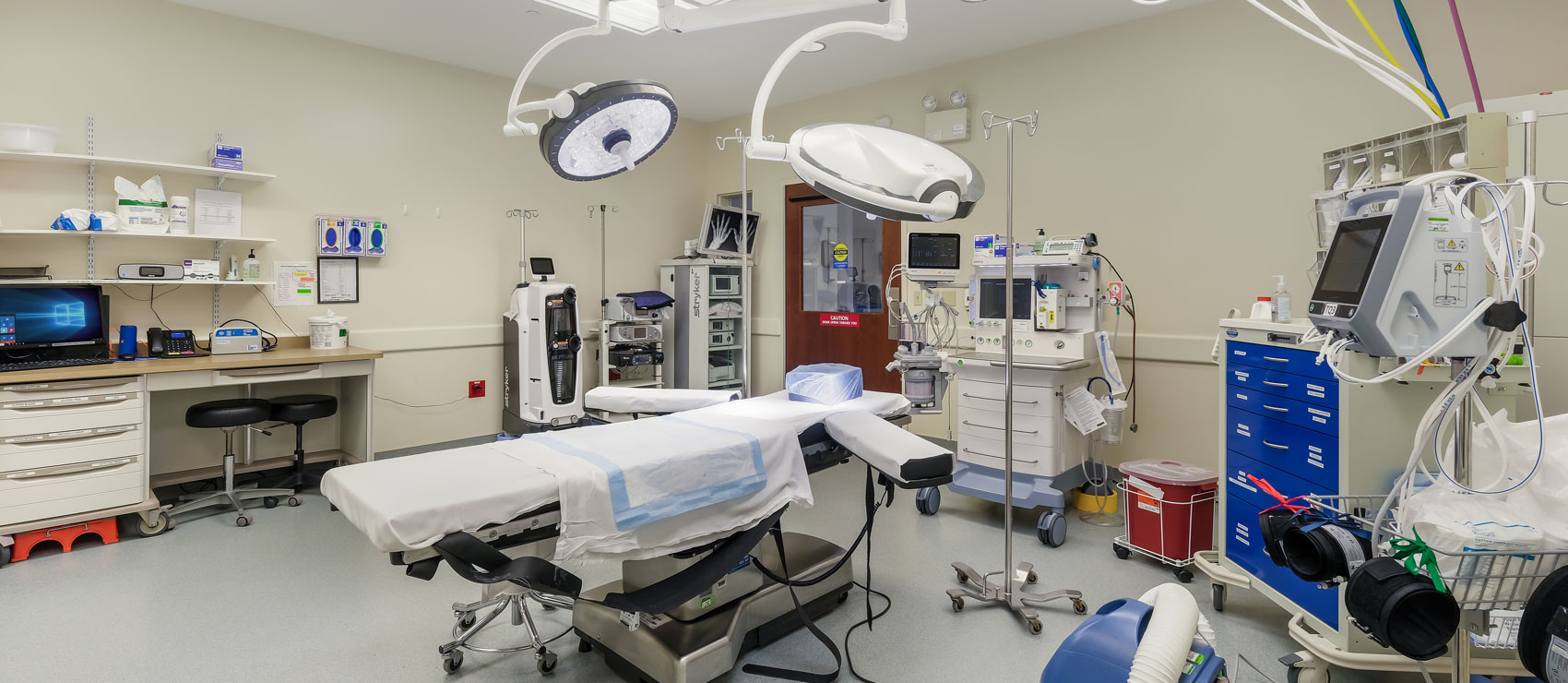Day of Your Surgery

Important Items to Bring
- Your picture ID with proof of address. If your ID does not include your address, bring another proof of your physical address such as a current utility bill.
- Health insurance card and any co-pay, co-insurance or deductible that is your responsibility. We accept cash, check, VISA, MasterCard and Discover card.
Check In
Check in at our reception desk at the time specified in the call by our pre-op nurse. We will ask you to complete admission forms and then remain in the waiting room until a nurse takes you into pre-surgery.
Pre-Op
A nurse will verify your information and place an ID bracelet on your wrist. You will change into a patient gown with your belongings placed in safekeeping. The nurse will help you get comfortable and again review your medical history. Your surgeon will visit with you to confirm your surgical consent and then mark the operative site on your body. The nurse will start an IV for the medications you will be receiving.
Before your surgery, the anesthesiology doctor will ask more details about your health history, medications and personal or family history with anesthesia. Your vital signs will be assessed, along with any lab results or pre-surgery tests, and the impact your height and weight may have on the medications you receive. You will be able to ask questions, voice concerns and preferences. Our goal is to help you feel as safe and relaxed as possible.
Types of Anesthesia
The type of anesthesia you receive will be determined by the procedure, your medical history and preferences. Some anesthesia can influence your time in recovery; but the primary factor is your medical status.
- Conscious Sedation
Places patient in a relaxed, “twilight” state, as if you are asleep but still able to be aroused. - Regional Anesthesia
Anesthetizes the part of the body to be treated and is often used in conjunction with conscious sedation or general anesthesia. - General Anesthesia
Places patient in an unconscious state during the surgery.
In the Operating Room
You are the most important person in the operating room. If you have questions or concerns, please speak with your nurse. When you arrive in the operating room, the lights may seem bright and the temperature cool. If you’d like a warm blanket, just ask us. Your comfort and safety are our top priorities.
As part of our operating room routine, the surgery team will conduct a “time out” before beginning your surgery. This is our final confirmation that we are doing the correct procedure on the correct site, and that all the necessary instruments and equipment are ready. We also note if you have any allergies to medications and if antibiotics were given.
Recovery
After surgery, you will be moved into the recovery area and monitored by a specially trained post-operative care nurse. Medications for pain relief will be given under the direction of the anesthesiologist. You will remain in recovery until you meet the criteria for discharge.
Recovery time varies from patient to patient, and can last up to 2 hours. When you are medically ready to be discharged, we will review discharge instructions with you and the person waiting for you. You will receive a written copy.
We will also give you a patient survey to take home and complete. Your responses help us improve our care of patients. Please return the survey at your earliest convenience. We are grateful for your feedback. You can also download our Patient Experience Survey.
At Home
For the first 24 hours following your surgery, there may be some residual effect of the anesthesia. Rest under the observation of a responsible adult who can follow up on discharge orders and monitor your progress. Do not drive a vehicle or make any important decisions. For the length of time you take any additional oral pain medications, you will continue to feel sedated, even after the anesthesia has worn off. Don’t drink any alcohol as long as you are taking pain medication.
If you experience any complications or adverse side effects, contact your doctor or call 911. We will call you the next day to check on you. Continue to rest until you are fully recovered, following your doctor’s instructions for return to routines and activities.
We wish you a full and speedy recovery. Here’s to your optimal health and wellbeing!
